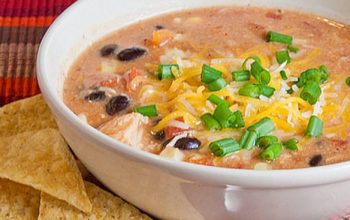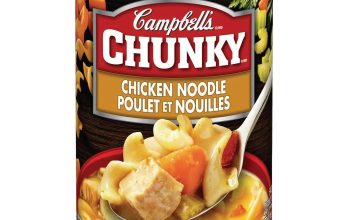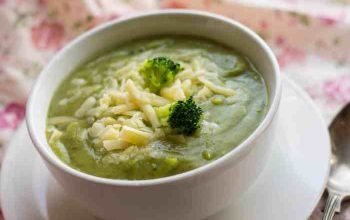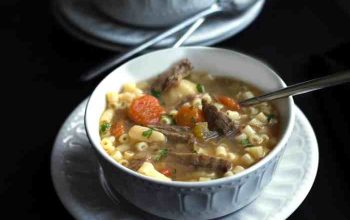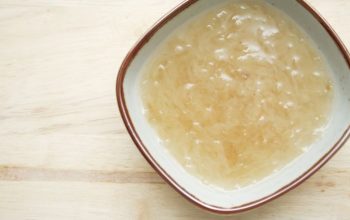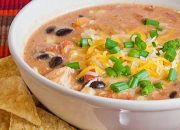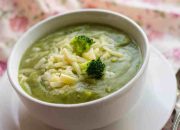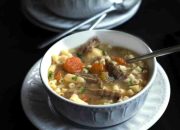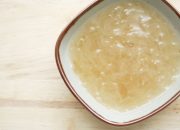Soup and Bread: A Culinary Symphony
Soup and bread recipes – The pairing of soup and bread is a culinary tradition spanning centuries and cultures, a harmonious blend of textures and flavors that elevates the simple act of eating to an experience. From the rustic French onion soup with its crusty baguette to the comforting chicken noodle soup paired with fluffy biscuits, this timeless combination offers endless possibilities for culinary exploration.
This article delves into the art of soup and bread pairings, exploring the historical context, culinary principles, classic recipes, and creative variations to inspire your own culinary adventures.
Introduction to Soup and Bread Pairings
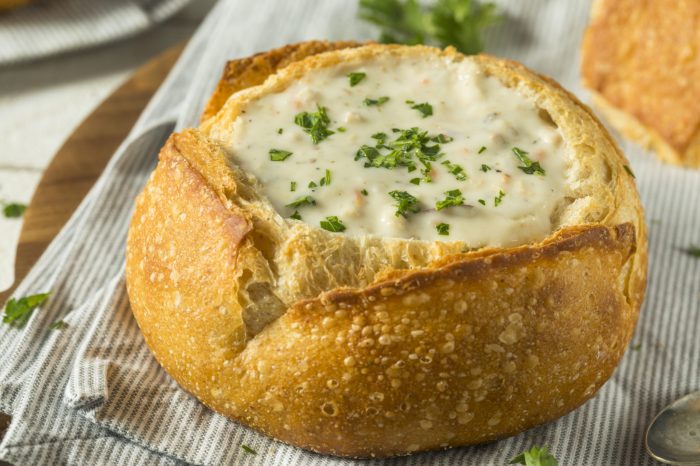
Source: fiorfiore-italianfood.com
The historical and cultural significance of soup and bread pairings is deeply rooted in practicality and culinary ingenuity. Bread, a staple across numerous cultures, served as a vessel and utensil, soaking up the flavorful broth and enriching the overall eating experience. The combination provided a balanced and satisfying meal, particularly for those with limited resources. In many cultures, the type of bread served alongside a particular soup reflects regional traditions and ingredients.
For example, the hearty Italian minestrone soup often accompanies crusty bread, while the delicate French onion soup is classically served with a baguette.
I’m always on the hunt for comforting soup and bread recipes – the perfect pairing for a cozy night in. Lately, I’ve been experimenting with more globally inspired flavors, and I recently stumbled upon a fantastic recipe for a truly delicious red curry soup recipe that’s become a new favorite. It’s so flavorful and warming, and I’m already thinking about what kind of crusty bread would best complement it next time!
Successful soup and bread pairings hinge on the interplay of texture, flavor, and temperature. A thick, creamy soup like potato soup might benefit from a crisp, crusty bread to provide textural contrast. Conversely, a light broth-based soup, such as chicken noodle, pairs well with a softer bread that complements the delicate flavors without overpowering them. Temperature also plays a crucial role; a warm, comforting soup is often best served with warm bread, while a chilled gazpacho might be enhanced by a room-temperature or lightly toasted bread.
| Soup Type | Bread Type | Flavor Profile Description | Serving Suggestion |
|---|---|---|---|
| French Onion Soup | Baguette | Savory, caramelized onions, rich broth, contrasting textures | Served with bread for dipping into the broth |
| Minestrone | Crusty Italian Bread | Hearty vegetable soup, bright acidity, robust flavors | Soaked in soup, eaten alongside |
| Chicken Noodle Soup | Buttermilk Biscuits | Comforting, savory, slightly sweet | Served alongside, for dipping |
| Tomato Soup | Grilled Cheese Sandwich | Tangy, sweet, and slightly acidic | Classic pairing, contrasts textures and flavors |
Classic Soup Recipes
These three classic soup recipes demonstrate the versatility and depth of flavor achievable through simple ingredients and careful technique. The choice of broth significantly impacts the overall taste, with rich stocks adding complexity and depth while lighter broths offer a more delicate flavor profile.
- French Onion Soup:
- Caramelize onions slowly until deeply golden brown.
- Deglaze the pan with dry sherry or white wine.
- Add beef broth, thyme, and bay leaf. Simmer.
- Top with toasted baguette slices and melted Gruyere cheese before serving.
Variations: Add a splash of balsamic vinegar for extra depth; use a different hard cheese like Comté.
- Tomato Soup:
- Sauté onions, garlic, and carrots in olive oil.
- Add diced tomatoes (fresh or canned), vegetable broth, and herbs (basil, oregano).
- Simmer until thickened.
- Blend until smooth (optional).
Variations: Add a touch of cream or coconut milk for richness; roast the tomatoes for a deeper flavor.
- Chicken Noodle Soup:
- Simmer chicken in water with celery, carrots, and onions until tender.
- Remove chicken and shred.
- Add noodles to the broth and cook until tender.
- Return shredded chicken to the soup and season.
Variations: Use different vegetables like spinach or mushrooms; add dumplings for extra heartiness.
The role of different broths and stocks is paramount in achieving optimal flavor. Beef broth lends a rich, savory depth to French onion soup, while vegetable broth provides a lighter, more versatile base for tomato soup. Chicken broth forms the foundation of chicken noodle soup, contributing a savory, umami flavor that complements the other ingredients.
Bread Recipes to Complement Soups
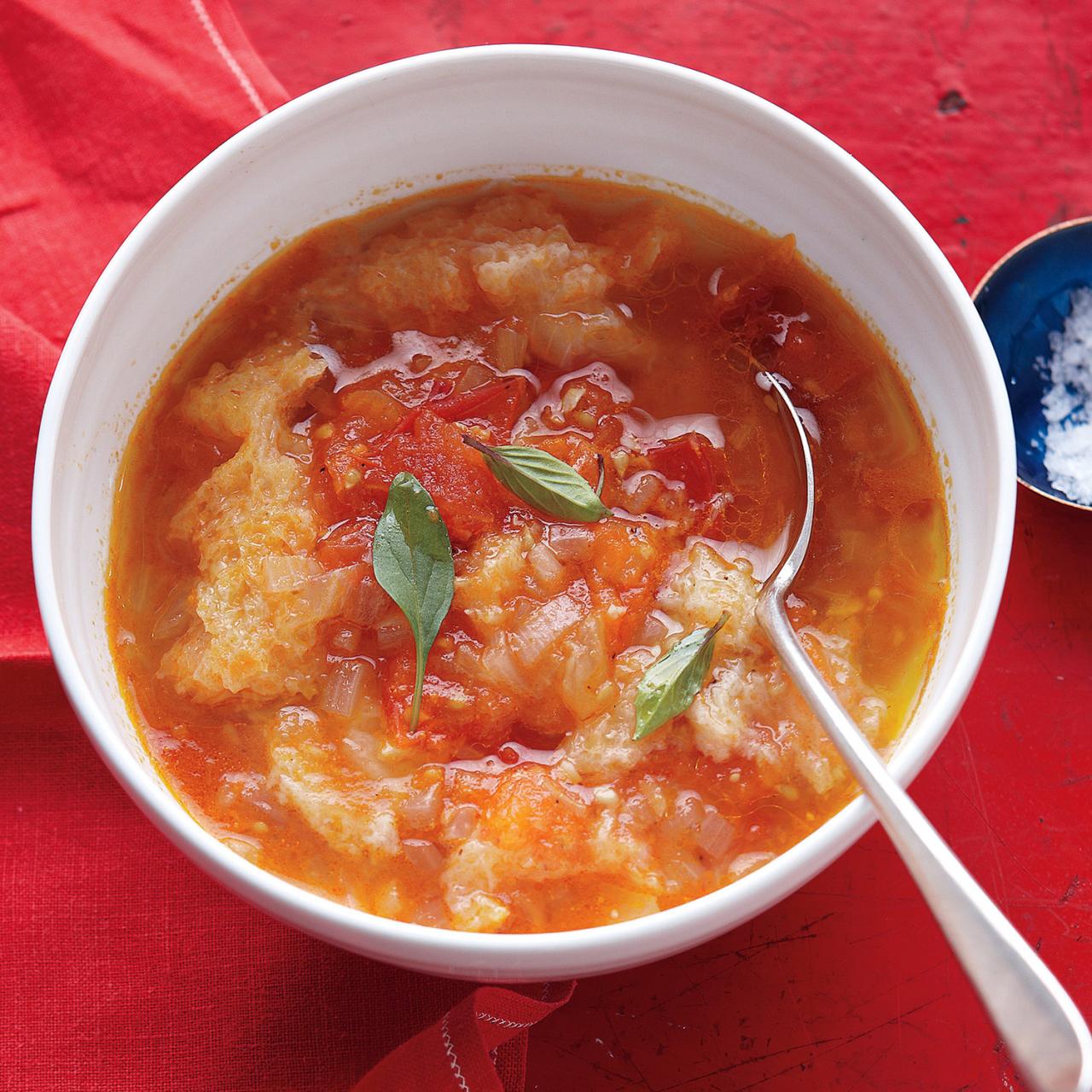
Source: marthastewart.com
The texture of bread is crucial in its interaction with soup. A crusty bread offers a satisfying contrast to a smooth, creamy soup, while a softer bread complements a lighter broth. The choice of bread-making technique influences the final texture and flavor, with sourdough offering a tangy complexity, yeast breads providing a softer crumb, and quick breads offering convenience and versatility.
- Crusty Bread for French Onion Soup:
- Mix flour, water, yeast, and salt.
- Knead until smooth and elastic.
- Let rise until doubled in size.
- Shape into a loaf and bake until golden brown.
- Focaccia for Minestrone:
- Mix flour, water, yeast, olive oil, and salt.
- Let rise until doubled in size.
- Spread into a pan and top with herbs and olive oil.
- Bake until golden brown.
- Buttermilk Biscuits for Chicken Noodle Soup:
- Combine flour, baking powder, salt, and butter.
- Add buttermilk and mix gently.
- Drop by spoonfuls onto a baking sheet.
- Bake until golden brown.
Exploring Flavor Combinations
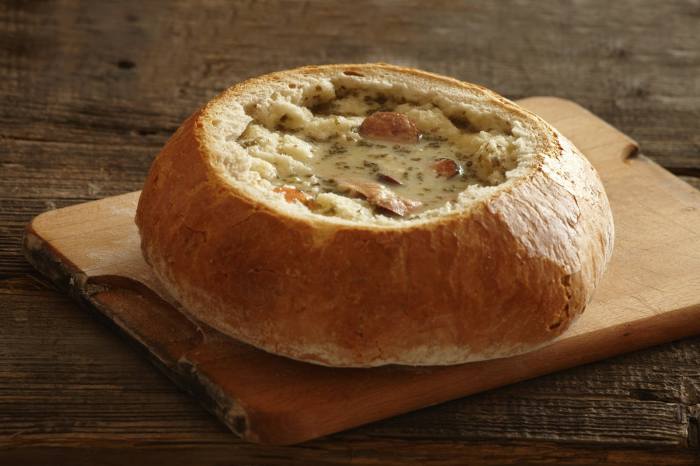
Source: apmcdn.org
The flavor profile of a soup significantly influences bread selection. A rich, savory soup like French onion complements a crusty bread that can stand up to the intense flavors. A lighter soup, such as chicken noodle, pairs well with a softer, less assertive bread. Herbs, spices, and cheeses further enhance the flavor interplay.
| Soup Flavor Profile | Complementary Bread Flavor | Suggested Herbs/Spices | Cheese Pairing |
|---|---|---|---|
| Savory, Herbaceous | Rosemary, Garlic | Rosemary, Thyme | Cheddar, Parmesan |
| Sweet, Tangy | Plain, slightly sweet | Basil, Oregano | Mozzarella, Goat Cheese |
| Spicy | Plain, slightly sweet | Chili flakes, cumin | None, or a mild cheese |
Flavor clashes can occur if the bread’s flavor profile is too strong or doesn’t complement the soup’s dominant notes. For example, a strongly flavored sourdough might overpower a delicate broth. Solutions include choosing a milder bread or using a bread with complementary flavors.
Presentation and Serving Suggestions, Soup and bread recipes
The presentation of soup and bread can elevate the dining experience. A simple yet elegant presentation might involve serving the soup in a shallow bowl to showcase its color and texture, accompanied by a rustic basket of warm bread. For a more formal setting, consider using individual bread bowls filled with soup, or serving the soup in elegant bowls with a side of artisan bread.
Garnishes and accompaniments such as fresh herbs, a drizzle of olive oil, a sprinkle of cheese, or a dollop of crème fraîche can enhance the overall experience. For casual dining, a simple bowl of soup with a crusty loaf is perfectly acceptable. For a formal dinner, consider more elaborate presentations, perhaps with individual bread courses or a bread basket with a variety of breads.
Dietary Considerations and Adaptations
Adapting soup and bread recipes to accommodate various dietary needs is straightforward. Vegetarian and vegan soups can easily be created by substituting vegetable broth for meat broth and using plant-based alternatives for dairy products. Gluten-free bread can be made using gluten-free flour blends. Allergies can be addressed by omitting or substituting allergenic ingredients.
Adjustments for specific dietary restrictions might involve using alternative flours, sweeteners, or thickening agents. For example, almond flour can replace wheat flour in bread recipes, while maple syrup or agave nectar can substitute for sugar. Nutritional benefits are significant, with soups providing vitamins, minerals, and fiber, while bread offers carbohydrates and essential nutrients. Balanced combinations ensure a complete and satisfying meal.
Question Bank: Soup And Bread Recipes
Can I substitute ingredients in the recipes?
Yes, many substitutions are possible depending on dietary needs or preferences. Consider flavor profiles and textures when making changes.
How long do homemade breads typically last?
The shelf life of homemade bread depends on the type of bread and storage method. Properly stored, most breads will last 3-5 days at room temperature, or longer if frozen.
What are some tips for making flavorful soup broths?
Start with quality ingredients, roast bones for depth of flavor, and simmer gently for extended periods to extract maximum flavor. Add aromatics like herbs and spices throughout the cooking process.
How can I make my soup and bread presentation more visually appealing?
Consider using attractive bowls and serving dishes. Garnish soups generously with fresh herbs, croutons, or a drizzle of oil. Serve bread in a rustic basket or on a charming platter.

